#Boris Romanovsky
Explore tagged Tumblr posts
Text





Grand Duke Andrei Vladimirovich, Mathilde Kschessinska and their son, Vladimir (Vova)
A little follow-up on Mathilde Kschessinska, Nicholas II's mistress before his marriage:
When the Revolution broke out, Mathilde left Russia with her son Vladimir, her then lover Grand Duke Andrei Vladimirovich, his mother, the formidable Maria Pavlovna the Elder, and Andres' brother Grand Duke Boris Vladimirovich (and his mistress). She married Andrei in exile, and their marriage lasted until his death. She finally had her Grand Duke. Mathilde always sustained that Vova, her son, was Andrei's son (there were rumors that he might have been Grand Duke Sergei Mikhailovich's son, and Sergei accepted him as such for a time.) Later, when Grand Duke Kyrill Vladimirovich (Andrei's eldest brother) declared himself Tsar, he made Mathilde a Princess, and her son became H.S.H. Prince Romanovsky-Krasinsky.
The following is a typically self-serving narration, by Keschessinska, of the night she met Andrei:
"...I hosted a dinner at my house. The dining room was too small to accommodate all the guests. The table was laid in the hall...To this dinner, I invited Grand Dukes Kirill and Boris Vladimirovich, who had previously visited me, and for the first time Grand Duke Andrei Vladimirovich. Opposite me, in the center of the table, I seated Grand Duke Kirill Vladimirovich as the eldest, Grand Duke Boris Vladimirovich to my right, Grand Duke Andrei Vladimirovich to my left, and Grand Duke Sergei Mikhailovich sat at the end of the table, behind the host...Grand Duke Andrei Vladimirovich immediately made a huge impression on me that first evening that I met him: he was surprisingly handsome and very shy, which did not spoil him at all, on the contrary. During dinner, he accidentally touched a glass of red wine with his sleeve, tipping over my direction and spilling over my dress... I was not upset that the wonderful dress was lost, I immediately saw in this an omen that this would bring me a lot of happiness in life...From that day on, a feeling crept into my heart that I had not experienced for a long time; it was no longer an empty flirtation ... ".
If you want to learn further about this very ambitious woman and, most interestingly, the members of the Imperial Family she associated with, I recommend Coryne Hall's book (see below). Mathilde's biography is available at Amazon also, but I would take that with a grain of salt.
By the way, Mathilde never made any claims about meeting the Tsar after his marriage, and there is no evidence whatsoever that such a thing happened...neither does she claim to have had a child with him, which is another baseless rumor that creeps up every once in a while. (gcl)
Hall, Coryne, Imperial Dancer: Mathilde Kschessinska and the Romanovs, Sutton Publishing, England, 2005.
Dancing in Petersburg the Memoirs of Kschessinska Hardcover – Import, January 1, 1960
#russian history#imperial russia#mathilde kschessinska#Grand Duke Andrei Vladimirovich#H.S.H. Prince Romanovsky-Krasinsky.
16 notes
·
View notes
Text
For #WorldCamelDay:

Caravan, 1930. One of a series of paintings of life in Tiflis/Tbilisi by Borys Romanowski / Boris Romanovsky (1879-1947), a Polish artist who lived and worked in the Georgian capital in the 1st half of the 20th century.
#Borys Romanowski#Boris Romanovsky#European art#20th century art#modern art#painting#Tbilisi#Tiflis#camel#camels#caravan#World Camel Day#animal holiday#animals in art
28 notes
·
View notes
Photo
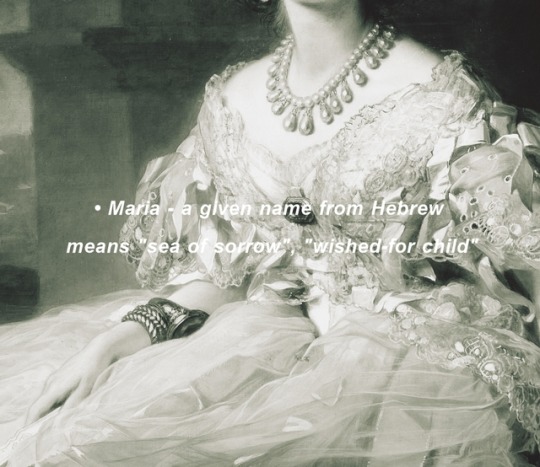

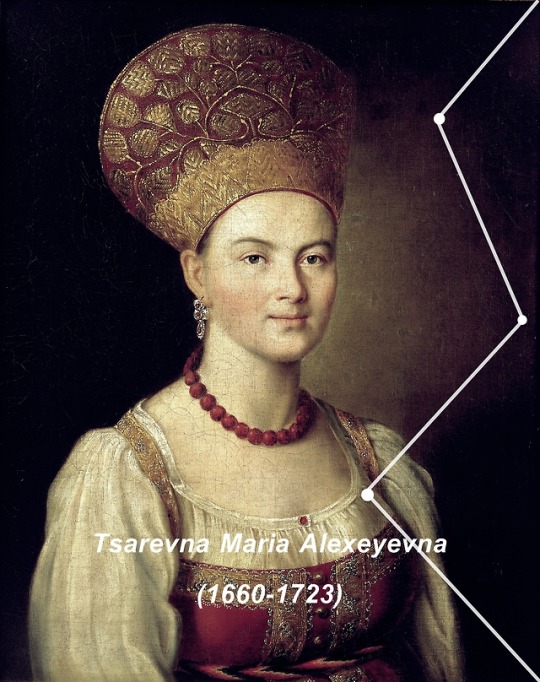

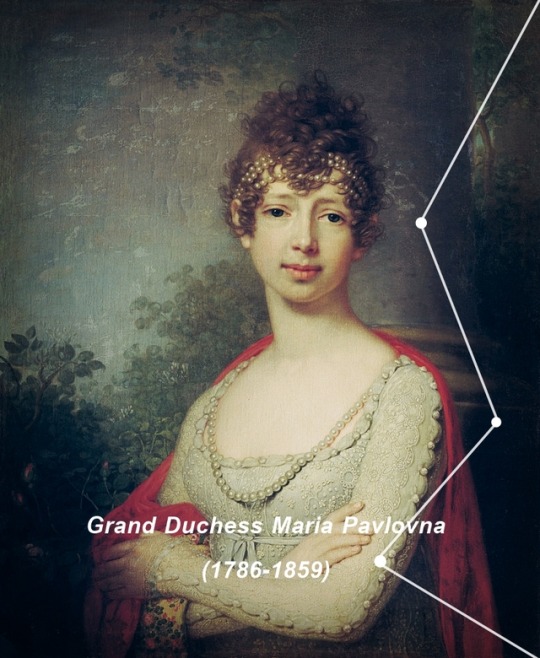
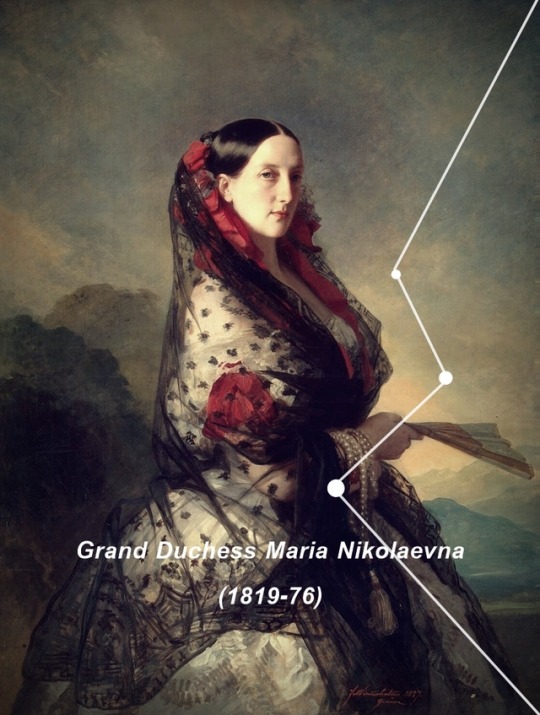
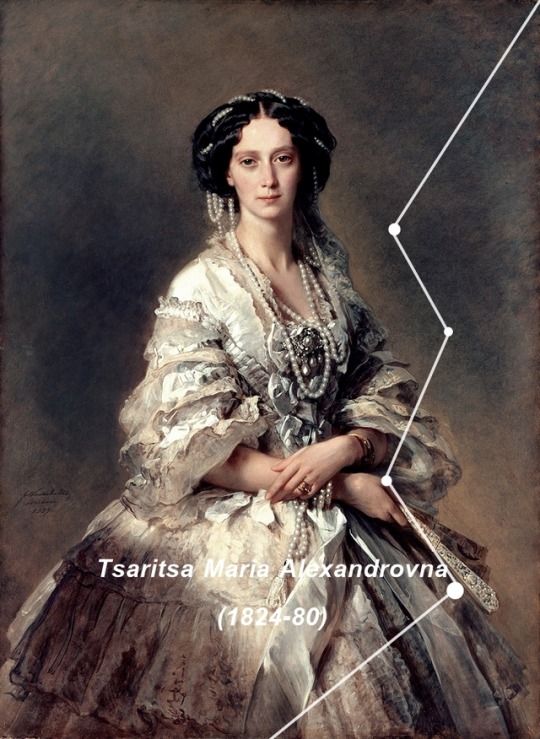


ROMANOV NAMES: Maria (part one)
Maria (rus.Мария) - a given name from derived from the Hebrew Miryām, which means “sea of sorrow “ or “wished for child”
Maria Miloslavskaya, the first spouse of Tsar Alexey, was the first woman from Romanov family to be called by name Maria at the same time.
Tsaritsa Maria Ilyinichna Miloslavskaya was born in 1625 as younger daughter of Russian boyar and diplomat, Ilya Danilovich Miloslavsky. Passed over, in first bride selection in favour of Euphemia Fedorovna Vsevolozhskaya, she was chosen by young Tsar Alexey few months later as his bride. It’s likely that behind Alexey’s choice stood Boris Morozov, an influental boyar and tutor to Tsar, who hoped to marry Maria’s sister and become his brother-in-law. Both couples were wedded on 16 January 1648 and new Tsaritsa conceived soon after that. Alexey and Maria produced 13 children in general, but 5 of them didn’t survived into adulthood. Maria fulfilled her duty in regard to religion and charity. She engaged herself in public dotations for poor and disabled children and benefited some monasteries. Unfortunately, her happy union with husband was ended by her death in childbirth on 1669. Her last child, weak Tsarevna Eudoxia didn’t outlived her mother and died only 1 day after birth.
Tsarevna Maria Alexeyevna was born on 28 January 1660 as the eighth child of Alexey I and his first spouse, above-mentioned, Tsaritsa Maria Milovskaya. She was not involved in politics, but her sympathy for first wife of his half-brother, Eudoxia Lopukhina didn’t made her popular and significant at Peter I’s court. Maria also took care of Alexei Petrovich, Peter and Eudoxia’s firstborn son, after his mother had been put into a nunnery against her will. When her nephew escaped from Peter’s tutelage, she helped him to maintain a contact with his mother. Some time later, she was accused of having prepared Alexei’s escape and taken in custody. Imprisoned and forgotten by all, Tsarevna died on 1723.
Tsaritsa Maria Fyodorovna was born 25 October 1759 as a daughter of Frederick Eugene II of Württemberg and his wife, Friederike Brandenburg-Schwedt. She was christened with name of Sophie Marie Dorothea Auguste Luise. Her parents gave her an excellent education; Sophie Maria had good command over Latin, German, Italian and French. In 1773 she was among a group of German princesses chosen as possible brides for Pavel I, but she was denied by Catherine the Great, in the view of her young age. In 1776 she was proposed as future bride for widowed Pavel I. Catherine was delighted with ideal of union between Pavel and Sophia Maria, mainly because she shared name, place of birth and similiar education with her future daughter-in-law. Wedding took place on September 1777. Sophia Maria converted to Ortodoxy and was given a name ‘Maria Fyodorovna’. Tall, thoughtful and rather plump woman was quickly dominated by her mother-in-law, but her marriage turned out to be a harmonious one, despite Pavel’s diffucult character and distrust. Generally, marriage resulted in ten children, including two future Tsars - Alexander I and Nicholas I. Except for Alexander and Konstantin, all her children enjoyed happy childhood by side of Maria. Between 1795 and 1806, seven members of her large family died in quick succession. Overshawdowed and overlooked during Catherine the Great’s reign, she became an influental figure during her sons’ reign and exerted tremendous influence over his younger sons’ lives and ways and involved herself in politcs and charity. Outlived by her assassinated husband and five of ten children, Maria was suffering humbly and passed away in 1828.
Grand Duchess Maria Pavlovna was born on 16 February 1786 as the fifth child of Tsar Pavel I, and his second spouse, Maria Fyodorovna. Rather not renowned for her beauty, Maria developed a precocious talent as pianist; her features had been misshapen by smallpox. In 1804, her brother arranged her marriage with Charles Frederick of Saxe-Weimar-Eisenach. They had four children, of which three survived childhood. Maria was not pleased with a low level of culture in in the poor Grand-Duchy of Saxe-Weimar-Eisenach, so she became a patron of arts and maintained a long-lived relationship with Vasily Zhukovsky, Johann Wolfgang von Goethe and Franz Liszt. On the advice of Maria, at Jena University, famous Literary Evenings were conducted. After death her husband, she withdrew from public life, what was contributed to her growing deafness. She died in 1784.
Tsaritsa Maria Alexandrovna was born on 8 August 1824 as the youngest daughter of Grand Duke Ludwig II of Hesse and his wife, Wilhelmine of Baden. Her legitimacy was conseted right from the very beginning due to her mother extramatrial relationship with August von Senarclens de Grancy. In 1839, young Tsasarevich Alexander Nicholaevich was travelling around Europe, looking for a wife. In Darmstadt he became capitaved by young, shy and withdrawn Princess Wilhelmina Maximiliana of Hesse-Darmstadt. But Nicholas I and his wife, Alexandra Fyodorovna expressed their disapproval for their son’s choice, as they learnt about questioned paternity of Grand Duke. But when Alexander informed them that he was considering about possible union between himself and Queen Victoria, the ultimate choice fell on Hessian princess. She converted to Ortodoxy and took a name ‘Maria Alexandrovna’. First years of marriage was happy, however Alexander was probably the most promiscuous Tsar of Russia ever and had different extramaterial relationships. He sired over 7 children out of wedlock. Frequent pregancies made it impossible for her to keep up with frivolous, rich Russian court, which literally adored her husband for his self-confidence and extraordinary charm. They started gradually to live apart. Maria was constantly ailling and suffered from weak lungs and therefore, she had to spent years abroad in order to treat herself. The birth of Pavel in 1860, left her with little strength and became clear that her health was in serious decline. It was advised by doctors that she was not supposed to share bed with Alexander any longer. Like many wives of unfaintful husbands, Maria sought for comfort in religion. By 1864 it was apparent that she had contracted consumption. She spent rest of her live in Sankt Petersburg mourning her first daughter, Alexandra and first-born son, Nixa who had passed away in 1864 of consumption. Maria was aware of his husband’s relationship with Ekaterina Dolgorukaya, which proved to more serious than his previous flings and resulted in 4 children. Maria died forgotten by all but her children on 1880.
Grand Duchess Maria Mikhailovna was born on 9 March 1825 as the first of five daughters of Grand Duke Mikhail Pavlovich and his spouse, Elena Pavlovna. Her father had always high hopes for her as the oldest daughter, though cherished and spoiled her greatly. Mikhail, who was eager to have son on his own, imposed upon her sense of duty and introduced her to the cavalry and infantry signals on the bugle and drum, but he also left Maria’s upbringing to his well-educated wife. Maria, who had been always suffering from weak health, died in her father’s arms in 1826.
Grand Duchess Maria Nicholaevna was born on 18 August 1819 as the second child of Tsar Nicholas I and his spouse, Alexandra Fyodorovna. Initially, her father was not thrilled at her birth as he had expected for a son, but quickly he became affectionate parent for her. She grew up into energic, out-spoken girl who lacked only sense of duty. From young years she showed interest in arts and was given a position of President of the Academy of Arts. In 1837 she fell in love with Maximilian, Duke of Leuchtenberg, who was grandson of late Empress Josephine, first wife of Napoleon Bonaparte, who had been defeated by Maria’s uncle, Alexander I. Maximilian was not considered as desireable partner for Grand Duchess, but talks were conducted and they were in 1838. They had seven children, who was granted with title of Dukes or Duchesses of Leuchtenburg and Princes or Princess Romanovsky/kaya. But years passed and couple started to live apart. In 1854 Maria made a second marriage to Count Grigori Stroganov which was kept in secret until death of Nicholas I. Her brother, Alexander II didn’t allow her to stay in Russia so she left her children behind, placing her own happiness over sense of duty. She died of varicose veins in 1876.
Tsaritsa Maria Fyodorovna was born as Maria Sophie Friederikke Dagmar, one of six children of Prince Christian of Schleswig-Holstein-Sonderburg-Glücksburg and his wife, Princess Louise of Hesse-Kassel on 26 November 1847. Alongside with her siblings, Dagmar lived an modest, quiet live in Copenhagen, because his father was only an unsignificant German-born prince from impovernished cadet line of family. But in 1852 her father was recognized as heir-presumptive to his childless uncle, Frederick VII, largely due to his wife rights for Danish throne as a niece of Frederick’s father. However, Christian’s new role change little in the live of Dagmar. Her family still resided in Yellow Palace, avoiding Danish court and court functions. Around 1864, Dagmar (or Minnie as she was generally known in her family circles) grew into a pretty, gentle young girl, who caught eye of Tsasarevich Nicholas, son of Alexander II, who was travelling across Europe. Nixa, as he was affectionally called, was handsome, wise and well-read men with large knowlegde. They became smitten with each other. Minnie became engaged to Nicholas, but her happiness turned out to be short-lived. Nixa, who had always been thought to be of robust health, fell down with consumption and was never to recover. Whilst lying on his deathbed, he wished that his bride be married to his beloved brother, stout and narrow-minded Alexander, nicknamed Sasha. In spite of initial reluctance of Alexander to be married to Dagmar, they had a close and free of extramatrial affairs relationship until his death in 1894. Young wife, who had taken a name ‘Maria Fyodorovna’ was an exemplary spouse and representant of ‘golden youth’. She won Russian people over and became renowned for her leniency, charm and good influence that she exerted over her husband. The marriage resulted in 6 children of which, 5 survived into aduldhood, including future Nicholas II. Upon assassination of his father-in-law, Alexander II, she became Tsaritsa, but lived isolated and sheltered in Gatchina due to fear of attempts of assassination. When her son, not mastered in arts of rule, Nicholas II ascended on the throne, she played a significant role as his adviser and fall afoul of her daughter-in-law, Alexandra Fyodorovna, shy, withdrawn and religious princess from Hesse. Maria, despite all efforts to understand Alexandra, never managed to trust her and get along with her. In 1899, she was deeply affected by premature death of her beloved son, Georgy, who had been living alone in Georgia due to his uncurable tuberculosis. As Dowager Empress, Minnie get involved herself in charity and still kept her position and respect. After the October Revolution, she settled down in Denmark and refused to believe in death of her sons, Nicholas and Mikhail and Nicholas II’s family at the hands of Bolsheviks. She passed away surrounded by her only alive children, Xenia and Olga, on 1928. She outlived all her sons (Alexander, Georgy, Mikhail, Nicholas)
(i used picture of Sophia Alexeyevna for Miloslavskaya and picture of unknown lady for Maria Alexeyevna)
413 notes
·
View notes
Text
Vladimirovichi Edit Emperor Nicholas I (1796-1855) = Princess Charlotte of Prussia (1798-1860) | +-- Emperor Alexander II (1818-1881) = Princess Marie of Hesse (1824-1880) | +-- Grand Duke Vladimir Alexandrovich (1847-1909) = Duchess Marie of Mecklenburg-Schwerin (1854-1920) | +-- Grand Duke Alexander Vladimirovich (1875-1877) | +-- Grand Duke Cyril Vladimirovich (1876-1938) | = Princess Victoria Melita of Edinburgh (1875-1936) | | | +-- Princess Maria Kirillovna (1907-1951) cr. Grand Duchess of Russia[citation needed] | | = Friedrich Karl, Prince of Leiningen (1898-1946) | | | +-- Princess Kira Kirillovna (1909-1967) cr. Grand Duchess of Russia[citation needed] | | = Louis Ferdinand, Prince of Prussia (1907-1994) | | | +-- Prince Vladimir Kirillovich (1917-1992) cr. Grand Duke of Russia[citation needed] | = Princess Leonida Bagration-Moukhransky (1914-2010) | | | +-- Grand Duchess Maria Vladimirovna[citation needed] (b. 1953) | = Prince Franz Wilhelm of Prussia (b. 1943)cr. Grand Duke of Russia div. | | | +-- Prince George of Prussia (b. 1981) cr. Grand Duke of Russia[citation needed] | +-- Grand Duke Boris Vladimirovich (1877-1943) | = Zinaida Rashevskaya (1898-1963) | +-- Grand Duke Andrei Vladimirovich (1879-1956) | = Mathilde Kschessinska (1872-1971) cr. Princess Romanovskya-Krassinskya | | | +-- Prince Vladimir Romanovsky-Krasinsky (1902-1974) | +-- Grand Duchess Elena Vladimirovna (1882-1957) = Prince Nicholas of Greece and Denmark (1872-1938)
3 notes
·
View notes